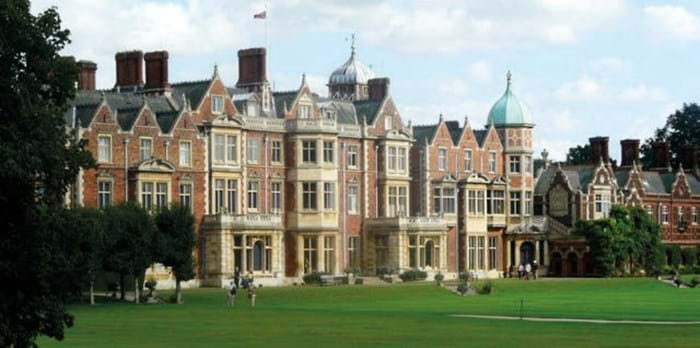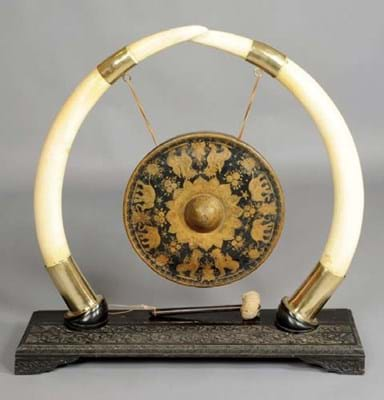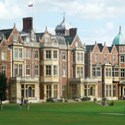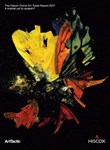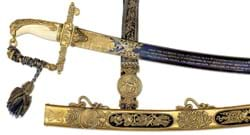The dinner gong, formed with two silver-mounted elephant tusks in their natural state, was part of a display of objects at the Norfolk country house marking the 70th anniversary of Indian Independence.
It was presented to the Prince of Wales before he became Edward VII during his state visit to the subcontinent in 1875-76.
Since changes to interpretation guidance in 2013, such items are no longer considered ‘worked’ and accordingly can no longer be used for commercial purposes.
This does not simply mean buying or selling objects.
CITES expert Kim McDonald of Taxidermy Law, who advises auction houses and museums, said Sandringham’s £15.50 entry fee to access the main house and gardens was enough to prompt the fear that unworked ivory was being used for profit.
Breaching the rules carries a maximum penalty of two years in jail and an unlimited fine.
Tusk patron
The embarrassing moment for the royal family – the Queen’s grandson Prince William, Duke of Cambridge, is patron of Tusk and has called for a complete ban on ivory trade in the UK – highlighted again the confusion surrounding the rules on ivory.
“If you are charging for entry, then it is commercial use
While there are no restrictions on displaying worked ivory, Simon James, case officer at the Animal and Plant Health Agency (APHA), told ATG that any museum or exhibition with a ticket price needs to apply for an Article 10 licence to display an Annex A species. “If you are charging for entry then it is commercial use,” he said.
James said that such applications are considered on a case-by-case basis. Applications that would be rejected for the purposes of sale will be considered if the items are being displayed for educational purposes or scientific benefit.
DC Sarah Bailey of the Metropolitan Police Wildlife Crime Unit told ATG similar cases had arisen when taxidermy was used as a display in pubs, restaurants or gentlemen’s clubs.
“Often we will ask what is the purpose of the public’s visit or the function of the venue. Is the Annex A species part of the background furniture or does it pertain to why an entrance fee is being charged?
“If it is background furniture then you might not need one – but always get the answer from the APHA in advance.”


